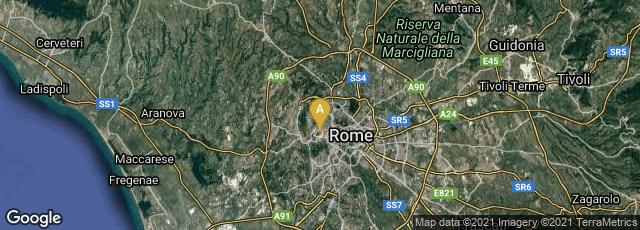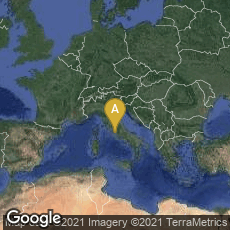

A: Città del Vaticano, Vatican City
"An initiative of the Vatican Library Digital manuscripts
"by Cesare Pasini
"The digitization of 80,000 manuscripts of the Vatican Library, it should be realized, is not a light-hearted project. Even with only a rough calculation one can foresee the need to reproduce 40 million pages with a mountain of computer data, to the order of 45 petabytes (that is, 45 million billion bytes). This obviously means pages variously written and illustrated or annotated, to be photographed with the highest definition, to include the greatest amount of data and avoid having to repeat the immense undertaking in the future.
"And these are delicate manuscripts, to be treated with care, without causing them damage of any kind. A great undertaking for the benefit of culture and in particular for the preservation and conservation of the patrimony entrusted to the Apostolic Library, in the tradition of a cultural service that the Holy See continues to express and develop through the centuries, adapting its commitment and energy to the possibilities offered by new technologies.
"The technological project of digitization with its various aspects is now ready. In the past two years, a technical feasibility study has been prepared with the contribution of the best experts, internal, external and also international. This resulted in a project of a great and innovative value from various points of view: the realization of the photography, the electronic formats for conservation, the guaranteed stability of photographs over time, the maintenance and management of the archives, and so forth.
"This project may be achieved over a span of 10 years divided into three phases, with possible intervals between them. In a preliminary phase the involvement of 60 people is planned, including photographers and conservator-verifiers, in the second and third phases at least 120. Before being able to initiate an undertaking of this kind, which is causing some anxiety to those in charge of the library (and not only to them!), naturally it will be necessary to find the funds. Moves have already been made in this direction with some positive results.
"The second announcement is that some weeks ago the “test bed” was set up; in other words the “bench test” that will make it possible to try out and examine the whole structure of the important project that has been studied and formulated so as to guarantee that it will function properly when undertaken in its full breadth.
"The work of reproduction uses two different machines, depending on the different types of material to be reproduced: one is a Metis Systems scanner, kindly lent to us free of charge by the manufacturers, and a 50 megapixel Hasselblad digital camera. Digitized images will be converted to the Flexible Image Transport System (FITS), a non-proprietary format, is extremely simple, was developed a few decades ago by NASA. It has been used for more than 40 years for the conservation of data concerning spatial missions and, in the past decade, in astrophysics and nuclear medicine. It permits the conservation of images with neither technical nor financial problems in the future, since it is systematically updated by the international scientific community.
"In addition to the servers that collect the images in FITS format accumulated by the two machines mentioned, another two servers have been installed to process the data to make it possible to search for images both by the shelf mark and the manuscript's descriptive elements, and also and above all by a graphic pattern, that is, by looking for similar images (graphic or figurative) in the entire digital memory.
"The latter instrument, truly innovative and certainly interesting for all who intend to undertake research on the Vatican's manuscripts – only think of when it will be possible to do such research on the entire patrimony of manuscripts in the Library! – was developed from the technology of the Autonomy Systems company, a leading English firm in the field of computer science, to which, moreover, we owe the entire funding of the “test bed”.
"For this “bench test”, set up in these weeks, 23 manuscripts are being used for a total of 7,500 digitized and indexed pages, with a mountain of computer data of about 5 terabytes (about 5,000 billion bytes).
"The image of the mustard seed springs to mind: the “text bed” is not much more in comparison with the immensity of the overall project. But we know well that this seed contains an immense energy that will enable it to grow, to become far larger than the other plants and to give hospitality to the birds of the air. In accepting the promise guaranteed in the parable, let us also give hope of it to those who await the results of this project's realization" (http://www.vaticanlibrary.va/home.php?, pag=newsletter_art_00087&BC=11, accessed 03-24-2010).